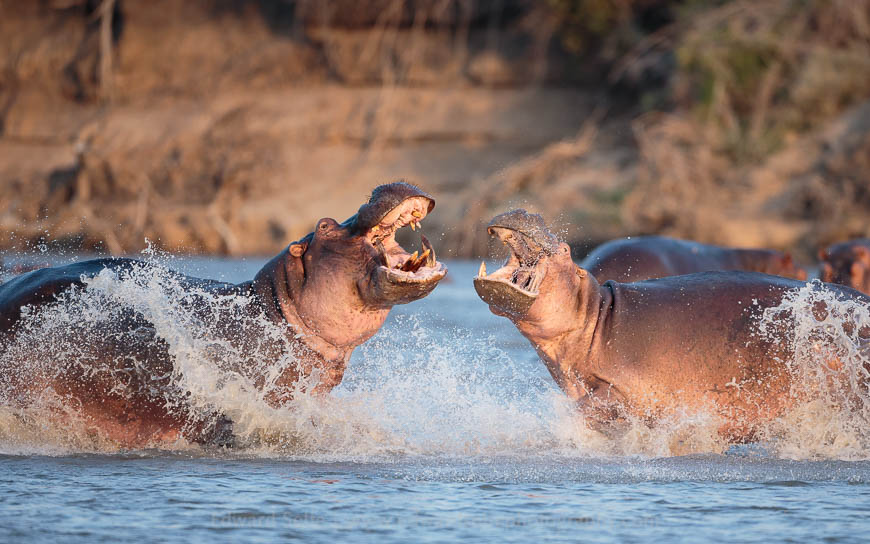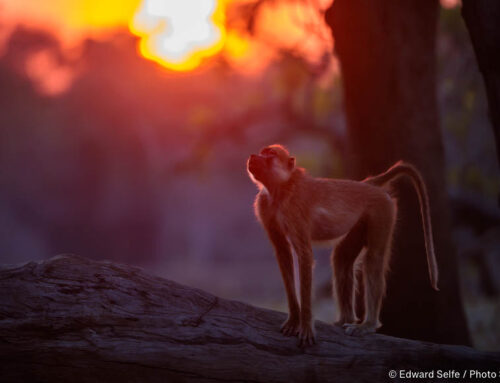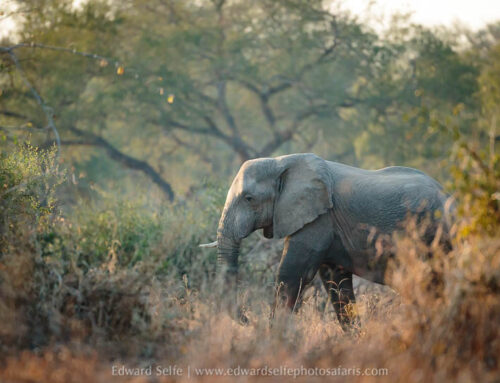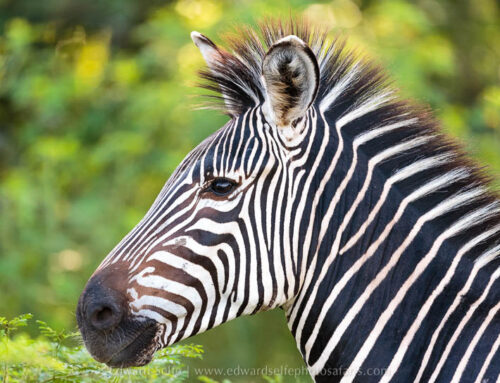Hippos spend most of their daylight hours in the shallow water of rivers and lagoons. They venture out at night to find food, when the cooler temperatures and cover of darkness protect them from the enemies of overheating and predation.
However, at night they are usually solitary and tend to move away from approaching safari vehicles with bright headlights! By day, they rest, often doing nothing more than flicking away a fly with a spray of water from their paddle-like tail, or rolling over to get more comfortable. This behaviour also leaves the photographer with limited options!
However, as the dry season wears on, hippos are increasingly forced into vanishingly small water bodies, and the social compression generates behaviour that is much rarer in the wetter months.
With so many animals in a small space, males lash out against other males; boundaries between territory holders are tested as the density of individuals increases; females display aggression towards males in protection of young calves; and pre-oestrus cows warn over-zealous bulls that it’s not time yet!
The skirmishes between females and males are interestingly the most common in my experience. They are usually brief, and often avoid much physical contact but the photographic opportunities are fantastic! That is what happened in the image below:

We visited this area of river – called Hippo City, just north of Lion Camp – one afternoon hoping to enjoy some hippo interaction. Very soon after arriving, I pointed out commotion in the water. A smaller hippo was moving in circles around a larger male; the smaller hippo was “chewing” the surface of the water, a sure sign of submission. This could be a male exerting dominance over a youngster, but more likely it’s a male harassing a female who is approaching oestrus. As often happens, her submissive behaviour continued for some time, and then she lashed out, lifting her head out of the water, spraying water everywhere and displaying her massive teeth!
This was repeated several times until the male got the message and settled down. Of course males expend considerable energy, and take considerable risks, to protect a territory for themselves. The purpose of doing so is to mate with females, so he has to ensure he is the one to mate when chances come along, explaining his persistence. However, the female needs to ensure that stronger males have a chance to compete for her before she submits, so that she knows she is carrying the best genes.
The image is striking because it shows a moment of tension between two very large mammals. The low perspective is achieved by parking at the water’s edge, which is only possible at certain points on the Luangwa. A high shutter speed of 1/2000sec freezes the spraying water and the hippos’ movement, and crucially, the eyes of both are visible, and not obstructed by water. I used burst mode to capture a series of shots, and chose this frame because it portrayed the drama most effectively….adn the soft, pink light of a Luangwa sunset did the rest!



